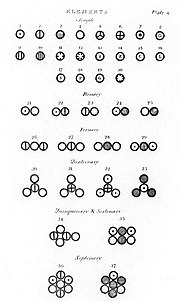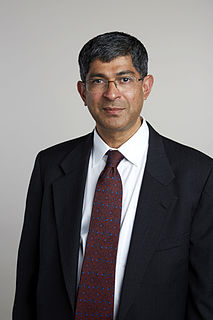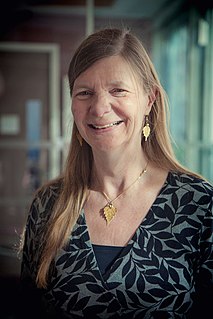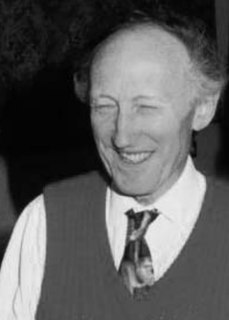
Mineralogy is a subject of geology specializing in the scientific study of the chemistry, crystal structure, and physical properties of minerals and mineralized artifacts. Specific studies within mineralogy include the processes of mineral origin and formation, classification of minerals, their geographical distribution, as well as their utilization.

X-ray crystallography (XRC) is the experimental science determining the atomic and molecular structure of a crystal, in which the crystalline structure causes a beam of incident X-rays to diffract into many specific directions. By measuring the angles and intensities of these diffracted beams, a crystallographer can produce a three-dimensional picture of the density of electrons within the crystal. From this electron density, the mean positions of the atoms in the crystal can be determined, as well as their chemical bonds, their crystallographic disorder, and various other information.
Solid-state chemistry, also sometimes referred as materials chemistry, is the study of the synthesis, structure, and properties of solid phase materials, particularly, but not necessarily exclusively of, non-molecular solids. It therefore has a strong overlap with solid-state physics, mineralogy, crystallography, ceramics, metallurgy, thermodynamics, materials science and electronics with a focus on the synthesis of novel materials and their characterisation. Solids can be classified as crystalline or amorphous on basis of the nature of order present in the arrangement of their constituent particles.

Dorothy Mary Crowfoot Hodgkin was a British chemist who developed protein crystallography, for which she won the Nobel Prize in Chemistry in 1964.

Dame Kathleen Lonsdale, DBE, FRS was an Irish pacifist, prison reformer and crystallographer. She proved, in 1929, that the benzene ring is flat by using X-ray diffraction methods to elucidate the structure of hexamethylbenzene. She was the first to use Fourier spectral methods while solving the structure of hexachlorobenzene in 1931. During her career she attained several firsts for female scientists, including being one of the first two women elected a Fellow of the Royal Society (FRS) in 1945, first woman tenured professor at University College London, first woman president of the International Union of Crystallography, and first woman president of the British Association for the Advancement of Science.

Robert Huber is a German biochemist and Nobel laureate. known for his work crystallizing an intramembrane protein important in photosynthesis and subsequently applying X-ray crystallography to elucidate the protein's structure.
Manarat International University (MIU) is a private university in Dhaka, Bangladesh. It was established in 2001 by the Manarat Trust.

The timeline of chemistry lists important works, discoveries, ideas, inventions, and experiments that significantly changed humanity's understanding of the modern science known as chemistry, defined as the scientific study of the composition of matter and of its interactions. The history of chemistry in its modern form arguably began with the Irish scientist Robert Boyle, though its roots can be traced back to the earliest recorded history.

John Kuriyan is Chancellor's Professor at the University of California, Berkeley in the departments of Molecular and Cell Biology (MCB) and Chemistry. He is also a Faculty Scientist in Berkeley Lab's Physical Biosciences Division, a Howard Hughes Medical Institute investigator, and a member of the National Academy of Sciences.
Acta Crystallographica is a series of peer-reviewed scientific journals, with articles centred on crystallography, published by the International Union of Crystallography (IUCr). Originally established in 1948 as a single journal called Acta Crystallographica, there are now six independent Acta Crystallographica titles:
Judith Ann Kathleen Howard is a distinguished British chemist, crystallographer and Professor of Chemistry at Durham University.

Isabella Karle was an American chemist who was instrumental in developing techniques to extract plutonium chloride from a mixture containing plutonium oxide. For her scientific work, Karle received the Garvan–Olin Medal, Gregori Aminoff Prize, Bower Award, National Medal of Science, and the Navy Distinguished Civilian Service Award.
Jan C. A. Boeyens (1934-2015) was a South African chemist and educator.

Ada E. Yonath is an Israeli crystallographer best known for her pioneering work on the structure of the ribosome. She is the current director of the Helen and Milton A. Kimmelman Center for Biomolecular Structure and Assembly of the Weizmann Institute of Science.

Judith P. Klinman is an American chemist, biochemist, and molecular biologist known for her work on enzyme catalysis. She earned her A.B. from University of Pennsylvania in 1962 and Ph.D. from the same university in 1966. In 1978 she was the first female faculty member in the physical sciences at the University of California, Berkeley. Her group has discovered that room temperature nuclear tunneling occurs among various enzymatic reactions, and clarified the dynamics of tunneling process through data analysis. They have also discovered the quino-enzymes.

Elspeth Frances Garman is professor of molecular biophysics at the University of Oxford and a former President of the British Crystallographic Association. She is also Senior Kurti Research Fellow at Brasenose College, Oxford. The "Garman limit", which is the radiation dose limit of a cryocooled protein crystal, is named after her.
George Michael Sheldrick, FRS is a British chemist who specialises in molecular structure determination. He is one of the most cited workers in the field, having over 220,000 citations as of 2015 and an h-index of 111. He was a professor at the University of Göttingen from 1978 until his retirement in 2011.
Alice Vrielink is a structural biologist who is Head of Discipline in Biochemistry and Molecular Biology at the University of Western Australia. She conducts research in crystallography.

Dr John Harry Robertson PhD, CChem, FRSC, FInstP was a British crystallographer whose work was important in the development of crystallographic techniques.
Miriam Rossi is an Italian-American chemist and the Mary Landon Sague Chair at Vassar College. She works on x-ray crystallography and chemistry education.












